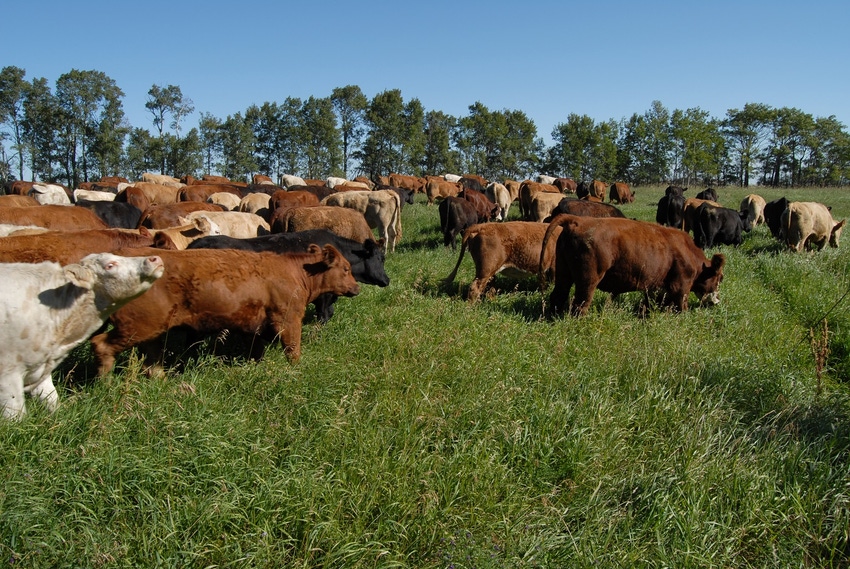
I regularly hear questions asked by newcomers to managed grazing that I believe a bit of history could answer.
When people began to manage their grazing in the early 1980s after hearing Allan Savory and Stan Parsons, they did so sheepishly. I believe there were at least three reasons: First was because they were afraid of "hurting" the forage; they had been programmed by the flawed idea from F.J. Crider's potted-grass experiments that led to the take-half-and-leave-half forage management concept. Savory was teaching about plant recovery (not rest) and the fact forage plants need to recover from grazing before being bitten again. This was the radical new idea. But the old ideas held on hard. The truth is that "severe" grazing is not a problem so long as the forage gets adequate recovery time. Put another way, taking most and leaving less than half is not a problem if the management fits the grazing.
Second, I believe producers didn't begin to understand the monetary value of frequent moves for cattle and so did not want to move them very often. This was fallacy also, and I recall from Savory's Holistic Management Workbook the diagrams which showed declines in forage quality are too large with infrequent moves, but are improved with more frequent moves. No matter, the belief system wasn't well-established in the minds of the early adopters and therefore they had to learn the hard way that more frequent moves, managed properly, benefit the cattle and the land.
Third, I think the natural human tendency toward laziness helped hold people back. I've heard various country-isms about this, but the one that sticks in my mind went something like this: "If I wanted to run a dairy, I'd be milking cows and not keeping beef cattle."
Another factor in those early years which I remember well was the overemphasis on stage of plant recovery, denoted as phases I, II and III regrowth. People were told they needed to always graze in phase II because that was the best combination of forage quality and volume. The idea was and is fundamentally correct, but trying to manage for that concept alone can drive one to insanity and it still doesn't build soil very much. It also drove many people to expensive practices such as haying and ensiling to "capture the quality" of those forages before they could become "over-mature."
It also can lead one backward toward the improper grazing of very young forages. One-time grazing guru Burt Smith once wrote about the problem: "The New Zealanders are so afraid of phase III growth they rarely let their forage get out of phase I.
I should also mention that many people struggled with the idea they could set up a certain number of paddocks and "rotate" the livestock on a regular schedule. This caused many wrecks in the country and on university farms. They didn't have enough paddocks and regular moves is a dangerous idea because it doesn't require monitoring and replanning.
Despite all these negative factors, people made some progresses and so they began to work on improving their forage-and-cattle management. Slowly alongside this, people began to realize this whole endeavor was very focused on soil health and rejuvenation, which in turn feeds into cutting costs and improving profitability. In this transition, there began to be an emphasis on ground cover and on plant height and complete plant recovery.
This brought the dawn of a new phase, which I tend to think of as the tall-grazing phase. This is still happening, and people are experimenting with varying stock densities and grazing times, seeking to get the best performance they can in mature forage. Along with this phase has come the understanding that more forage species in the mix is positive because it boosts overall forage quality and improves soil life more quickly.
Although many have not reached this level of thinking yet, a newer set of ideas -- arguably even more complex -- has now taken shape. It involves grazing part of the ranch during the grazing season closer to phase II recovery, while saving part of the ranch with no grazing during the growing season. The ungrazed portion should be large enough to get your cattle through winter. It also is the portion of the ranch which will build soil. All this is done at very high stock density, and the areas are switched from year to year.
As far as I can tell, this set of concepts was pioneered by Zimbabwean rancher/consultant Johann Zietsman, who also pioneered ultra-high-density grazing in the early 1990s. Jaime "Jim" Elizondo of Texas and Florida also uses and teaches this concept.
Zietsman explains this is a natural set of processes, as he has witnessed many species of ungulates "overgrazing" some areas at times, while large herds of migrating then pass through irregularly and are then gone for long periods, leaving ample forage recovery time. People on every continent are now practicing this type of grazing management with success and strong profits. Zietsman teaches this in his workshops. One of these is upcoming May 29-30 in Hobson, Montana.
Last but not least, I think it requisite to mention cattle type has held us back tremendously in these efforts. Our industry has spent close to 50 years selecting big cows based on which calves eat the most corn and gain the fastest in the feedlot. These are not efficient cows on pasture. They are even less efficient under high-density grazing. That means we need to change cow type to fit our grazing operations.
Managed grazing has become more complex, as it should. Nature is complex and constantly changing. We must be keen observers to keep track and to keep up. The rewards, however, are great.
You might also like:
Here's a primer for managed grazing, Part I
About the Author(s)
You May Also Like




